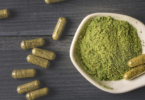FDA has received three separate notifications in recent years to lawfully market kratom—the botanical from Southeast Asia—in dietary supplements, but the public health agency has objected to each submission based on determinations the notices failed to provide sufficient evidence of safety.
Although dietary supplements sold in the United States are not subject to premarket approval, FDA has determined kratom is a new dietary ingredient (NDI) subject to a safety-related notification.
To date, companies seeking to lawfully market kratom in supplements have failed to persuade FDA that the botanical in their products meets the NDI standard in the Dietary Supplement Health and Education Act of 1994 (DSHEA): a reasonable expectation of safety. FDA also has objected to kratom notifications based on concerns that the submissions failed to sufficiently describe the identity of the ingredient.
Meantime, FDA’s top official—Commissioner Scott Gottlieb, M.D.—has signaled his agency will ramp up efforts to remove kratom from the U.S. market amid “mounting concerns regarding risks associated with” use of the botanical.
“Importantly, evidence shows that kratom has similar effects to narcotics like opioids, and carries similar risks of abuse, addiction and in some cases, death,” Gottlieb said in a Nov. 14 statement, widely reported by the national press. “Thus, it’s not surprising that often kratom is taken recreationally by users for its euphoric effects. At a time when we have hit a critical point in the opioid epidemic, the increasing use of kratom as an alternative or adjunct to opioid use is extremely concerning.”
Gottlieb said FDA is aware of 36 deaths associated with products containing kratom. He also noted use of the botanical is associated with serious side effects like liver damage, seizures and withdrawal symptoms.
The American Kratom Association has maintained kratom is safe. The non-profit group announced this week that its review of an adverse event reporting system database maintained by FDA established not one death from 2011 to 2017 was solely attributable to kratom in the United States.
“Our message today is very simple. Kratom is a safe botanical that does not kill people,” Dave Herman, chair of the board of the American Kratom Association, said in a Nov. 29 press release. “If the government bans kratom, more people will die. Kratom is an alternative to opioids, not a gateway to opioid abuse. The American Kratom Association supports appropriate FDA regulations to ensure product quality and safety for consumers.”
Daniel Fabricant, Ph.D., the former director of FDA’s Division of Dietary Supplement Programs, acknowledged adverse event reports (AERs) rarely prove a product caused an illness. However, he noted they may signal a potential concern.
“Adverse event reports are rarely perfectly causal, but I think you start seeing signals stack up, which is what I think people have seen” with kratom, he said in a phone interview.
Fabricant said he has seen no evidence the kratom industry is serious about following regulations to ensure safety and quality in products containing the botanical.
He referenced claims in the marketplace that kratom treats addiction and provides relief of intense pain. Dietary supplements cannot make claims of treating a disease.
“If people are willing to make those claims, do we think there’s any sort of product quality, or do we think they know what the hell they’re doing batch to batch?” asked Fabricant, who leads the Natural Products Association (NPA), in a phone interview. “What’s the odds of these being made in a GMP facility?”
While some efforts have been made by the kratom industry to go through the regulatory process, they have fallen short of FDA’s expectations for safety.
In late April, FDA acknowledged an NDI notification (NDIN) related to kratom that was submitted by an attorney on behalf of the American Botanical Corporation. An FDA spokeswoman, Lyndsay Meyer, said her agency objected to the submission based on “inadequacies of both safety and identity.”
The notification, and FDA’s response to it, is not yet publicly available. Martin Hahn, a partner in Washington with the law firm Hogan Lovells, who submitted the NDIN, did not respond to multiple requests for comment.
About one year ago, FDA objected to a separate NDIN submitted by Industrial Chemical on behalf of INI Botanicals. INI Botanicals owner David Derian said Industrial Chemical is his manufacturing partner.
“FDA has carefully considered the information in your submission and the agency has significant concerns about the evidence on which you rely to support your conclusion that the dietary supplement product containing ‘99% Mitragynine extract’ (‘Mitrasafe’) will reasonably be expected to be safe under the conditions of use described in your notification,” Robert Durkin, an FDA official who works on dietary supplement issues, wrote in the Dec. 20, 2016 response letter to Industrial Chemical.
Part of the safety documentation submitted to FDA referenced toxicology studies of mitragynine—an active constituent of kratom—in dogs, mice and rats. But FDA was unable to establish the safety of the product subject to the NDIN for several reasons.
“First, your notification did not include safety studies on the product that you intended to market under the proposed conditions of use,” Durkin wrote. “Second, you did not relate how the test article that is used in these studies is qualitatively and quantitatively similar to your ingredient. Third, the studies lacked data from doses at which there were no reported adverse effects.”
Durkin also observed that “acute and subacute toxicity studies showed significant safety concerns.” In a 28-day study of mitragynine in rats, Durkin reported “mitragynine caused withdrawal signs and changed hematological parameters at all dose levels in both males and females, as well as liver, kidney, and brain toxicities at 100 mg/kg body weight.”
Derian, a kratom user, said he hopes to address FDA’s concerns and resubmit an NDIN in the next few months. He acknowledged reliance on existing scientific evidence and said the company has not done any animal or human studies itself to date.
“We hope to provide toxicology on our specific extraction format to show that our dose is not only safe, but is safe 50 times over,” Derian said in a phone interview.
He said INI Botanicals (brand name: Lucky Botanicals) isn’t marketing kratom today and took the brand, Lucky Kratom, off the market in early 2016, in part, to prepare for the NDIN to FDA.
Derian suggested the kratom ingredient could be sold in a variety of products by businesses in the supplement industry committed to regulatory compliance.
FDA received an earlier kratom-related NDIN in 2015, but as INSIDER previously reported, the one-page notification for “Atomic K” failed to meet the basic regulatory requirements. It also neglected to provide evidence to show kratom in the supplement would be reasonably expected to be safe, as the law requires.
What would a company need to do to satisfy regulators that its kratom-containing supplement is safe?
For starters, Fabricant recommended manufacturing an extract that would significantly limit the presence of the two active compounds in kratom—mitragynine and 7-hydroxymitragynine—and demonstrate the remaining ingredients do not have characteristics associated with addiction.
“I think it would be very difficult for someone to make a kratom product that was high in mitragynine and 7-hydroxymitragynine because those are very active components that light up the opioid receptors,” he said.
Added Fabricant: “There will never be an NDI just for kratom leaf in general. That would be the same as having an NDI for cocaine. That’s not going to happen.”
In August 2016, the Drug Enforcement Administration (DEA) issued a notice of intent to temporarily schedule mitragynine and 7-hydroxymitragynine into the Controlled Substances Act (CSA).
“These substances produce opioid-like effects, making their abuse a serious public health concern,” DEA declared in the notice.
The agency withdrew its notice a few months later in the wake of pressure from Congress and the public.
The drug agency solicited comments from the public regarding the scheduling of mitragynine and 7-hydroxymitragynine under the CSA. DEA also said it expected to receive from FDA a scheduling recommendation for the two substances, as well as a medical and scientific evaluation, which it previously requested.
In his recent statement, Gottlieb said FDA has conducted the comprehensive medical and scientific evaluation. Asked further about the evaluation and scheduling recommendation, FDA’s Meyer said, “We’re working with our partners at the Drug Enforcement Administration as they further evaluate these compounds and as DEA considers whether and how they should be scheduled.” Barbara Carreno, a DEA spokeswoman, did not immediately respond to a request for comment.
Derian’s own personal history with kratom helps to explain the widespread opposition that DEA encountered in 2016 after signaling its plans to effectively ban the botanical.
The 44-year-old said he was born with an extra vertebra in his spine and had been administered heavy pain medication since he was young. Derian said he had been taking Oxycontin, Xanax and muscle relaxers for well over a decade.
“The doses kept getting higher and higher,” he told INSIDER. “I tried everything I could to free myself from this, but my doctors would tell me this was the only option I had.”
While on the prescription medicines, Derian said he experienced such adverse effects as constipation, tremors and shakes. He described “living in a cloud” and being “unconnected to my spiritual side to a point where I didn’t even listen to music for like eight years.”
Added Derian, commenting on his use of opioids: “This took over and became everything.”
Then while Derian was staying in a rehabilitation center in Florida in 2010 as he sought to break free from opioids, a roommate mentioned kratom to him. After leaving the rehab facility, Derian researched kratom and began taking the botanical.
Derian said he soon quit smoking cigarettes and drinking alcohol. He explained he “had a different realization in life that I can do and be more.”
Among his actions to support access to kratom, Derian noted he co-founded the Botanical Education Alliance and currently serves as an advisory board member. On its website, the organization says it is “dedicated to educating consumers, lawmakers, law enforcement, and the media about safe and therapeutic natural supplements including Mitragyna speciosa, also known as Kratom.”
Asked about any harmful effects he’s experienced from kratom, Derian remarked, “Much like its cousin coffee, if you use kratom on a daily basis, you might get a little bit irritable and mildly lethargic on the days you don’t have it. That’s about the only adverse effect I’ve had after years of usage.”
Amid concerns raised over kratom by FDA, and previously, DEA, advocates of the botanical have turned to members of Congress for support.
Derian, a resident of Richmond, Virginia, said he met this week with Sen. Debbie Stabenow (D-Michigan), as well as staff members to Reps. Dave Brat (R-Virginia), Jack Bergman (R-Michigan) and Dan Kildee (D-Michigan). Derian said a disabled veteran and a consultant joined him in the meetings.
Brat was among 51 members of the House of Representatives to sign a letter dated September 26, 2016, urging DEA to delay its decision on placing kratom’s active compounds in Schedule I of the CSA. The agency withdrew its notice of intent just a few weeks later.
Asked to comment on the scheduling recommendation due from FDA, and DEA’s next move, Derian said, “I believe congressional support and public outcry will have them really review the science, and then I believe the science of kratom alone will prevail.”
However, persuading FDA kratom can be safely marketed in a dietary supplement is likely to be an uphill battle, especially given the concerns expressed by the agency’s top official, Gottlieb, who questioned in his recent statement whether use of kratom could expand rather than treat the nation’s opioid epidemic.
“We know it [kratom] acts on opioid receptors … and we know what those side effects are if you hit the opioid receptors,” Fabricant said. “In some ways, it’s a no brainer. It’s kind of like putting your hand in water and expecting it not to get wet.”






